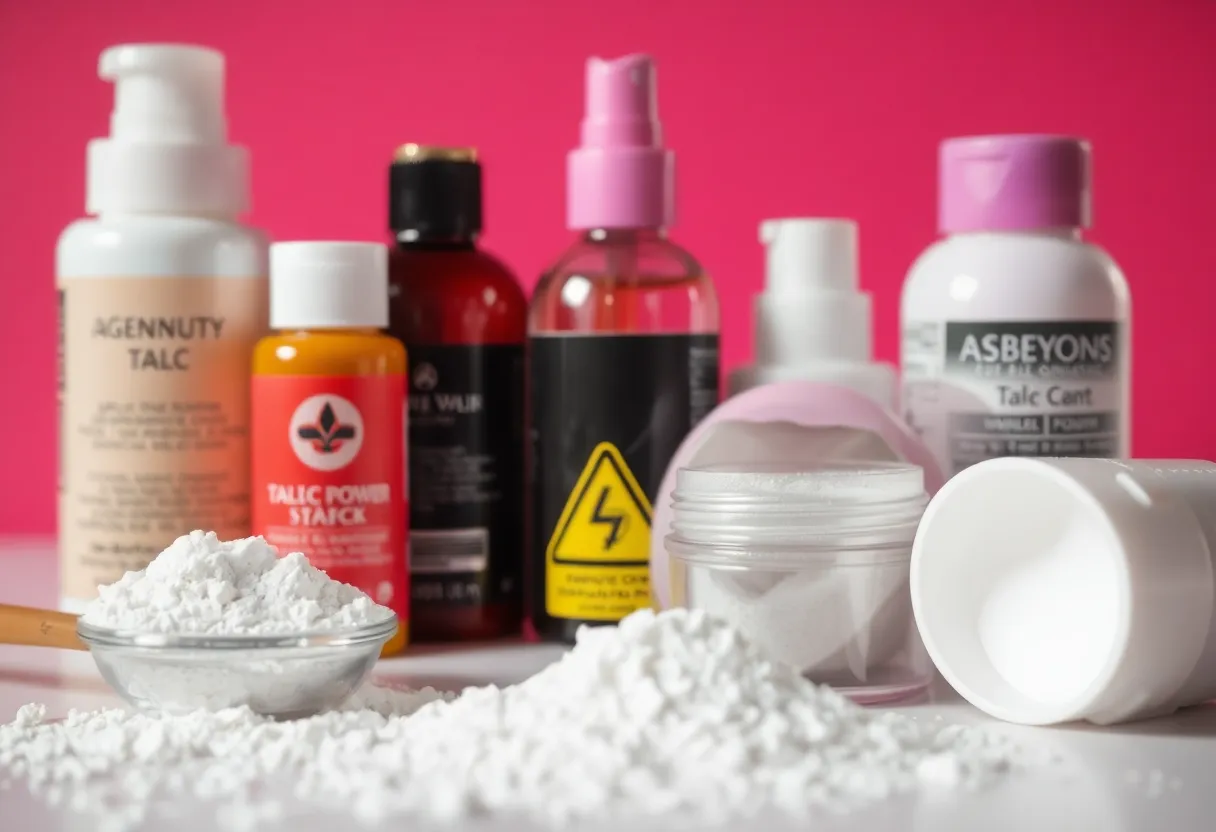News Summary
Exploring the risk of asbestos contamination in talc-based beauty products and the need for stricter regulations.
The Hidden Danger in Beauty Products: Talc and Asbestos Contamination
In the glittering world of beauty, a silent menace lurks within many popular cosmetics: asbestos-laden talc. Talc, a mineral known for its moisture-absorbing properties and ability to improve product consistency, is a common ingredient in everything from foundation to eye shadow. However, the mineral can be naturally contaminated with asbestos, a notorious substance linked to deadly diseases including cancer.
The Cross-Contamination Crisis
One of the core issues arises from the fact that talc and asbestos often reside in close proximity underground. This closeness can lead to significant cross-contamination, exposing consumers to harmful fibers without their knowledge. More than 62,000 lawsuits have been filed against corporations like Johnson & Johnson, alleging that their talc-based products have inflicted harm due to asbestos contamination.
Even as companies attempt to dodge hefty settlements through various legal maneuvers, the message remains clear: asbestos in beauty products is a serious concern. Though the FDA tested several common cosmetics in 2023 and found no traces of asbestos, these results do not guarantee the overall safety of talc-containing products. In fact, independent studies revealed that up to 14 percent of talc-based makeup had tested positive for asbestos.
New Legislative Efforts
Federal regulations are finally catching up to these hazards. In 2023, Congress passed an important law aimed at strengthening the testing requirements for products that contain talc. The FDA is now tasked with developing robust industry standards for asbestos testing, compelling manufacturers to conduct thorough tests using advanced techniques like polarized light and transmission electron microscopy (TEM).
Public participation in this process is encouraged, with comments on the proposed rule being accepted until March 27, 2025. Such measures are crucial for ensuring consumer safety and trust in beauty products that have become household staples.
The Johnson & Johnson Saga
The historic legal battles surrounding Johnson & Johnson, particularly regarding its baby powder products, exemplify the ongoing asbestos crisis. The corporation faces considerable challenges amidst claims that its baby powder has caused health issues due to asbestos contamination. Following the discontinuation of talc-based baby powder sales in 2023, the company continues to maintain the safety of its products.
Currently, Johnson & Johnson is set for a bankruptcy hearing on February 18, 2025, as it proposes an alarming $8.2 billion settlement plan. This follows previous attempts to file for bankruptcy, which have been rebuffed on the grounds that the company is not financially stressed. The corporate giant has employed the controversial Texas Two-Step strategy to shift legal liabilities to a subsidiary, Red River Talc LLC, in a prepackaged Chapter 11 case.
Legislative Moves Against Corporate Maneuvers
As public outrage grows, Senator Elizabeth Warren has introduced legislation to thwart manipulative bankruptcy tactics like the Texas Two-Step. The goal is to hold companies accountable and ensure victims receive the compensation they deserve. The FDA currently classifies asbestos as a recognized carcinogen known to cause various cancers, including mesothelioma.
Consumer Precautions Moving Forward
Despite regulatory efforts, some beauty brands remain steadfast in their use of talc, leaving consumers in a precarious position. To minimize risk, individuals are advised to examine product labels closely for terms such as “talc,” “talcum powder,” and “magnesium silicate.” The FDA’s proposed regulations will classify any talc-based products found to contain asbestos as adulterated, marking a significant stride towards consumer safety.
In the end, while legislative efforts offer a promising path forward, consumers must remain vigilant. With the potential for contamination lurking in some of the products they use daily, awareness and caution are more important now than ever.
Deeper Dive: News & Info About This Topic
HERE Resources
Baie Verte’s Abandoned Asbestos Mine Undergoes Transformation
Justice Secured for Mesothelioma Victim Thomas R. Sorrentino
Asbestos: A Silent Killer for Veterans and City Residents in San Diego
Warren Buffett’s Company Under Fire for Talc Sales Linked to Mesothelioma
Mesothelioma: A Deadly Legacy of Asbestos Exposure
Startling Discoveries Reveal Lack of Awareness About Asbestos Risks
Asbestos Continues to Haunt Veterans: A Hidden Epidemic
Controversial Proposal to Reintroduce Asbestos Throws Australia into Debate
Asbestos Threat Looms Over Government Properties in Honiara
Recent Developments in Asbestos Legal Battles Across Washington State



















